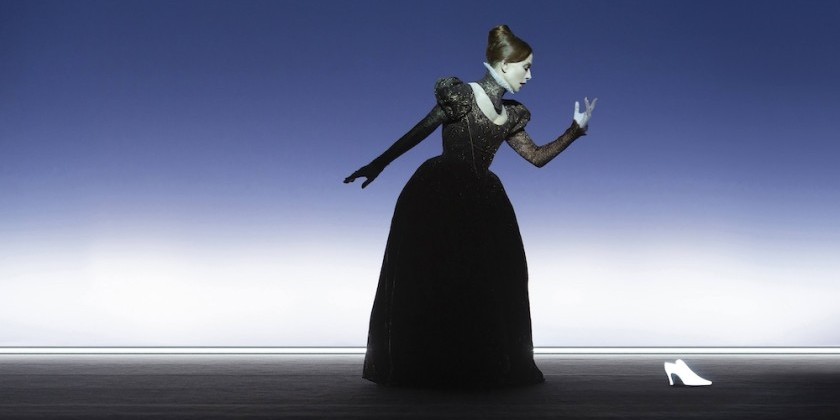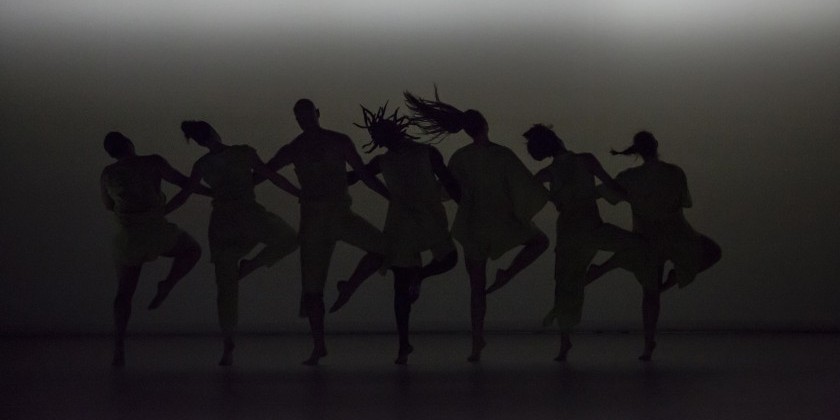IMPRESSIONS: "Masterclass" with Adrienne Truscott at NYU Skirball

Masterclass
Writer: Feidlim Cannon, Gary Keegan & Adrienne Truscott
Creative Producer: Rachel Bergin
Movement Director: Eddie Kay
Set Designer: Ellen Kirk
Lighting Designer: Dara Hoban
Costume Designer: Sarah Foley
Sound Designer: Jennifer O’Malley
Production Manager: Eoin Kilkenny
Stage Manager: Grace Donnery
NYU Skirball, 566 LaGuardia Pl, New York, NY
March 28 - 29, 2025
Performance artist Adrienne Truscott gets a few good laughs lampooning male chauvinism in Masterclass, an hourlong skit that Truscott and Feidlim Cannon of the Irish theater company Brokentalkers performed at NYU Skirball on March 29. Purportedly a talk-show interview with a celebrity author whose misogynist plays notoriously belittle and abuse their female characters, Masterclass is ruefully hilarious.

Adrienne Truscott in Masterclass. Photo: SteMurray
In this interview, Truscott herself portrays the boorish writer. This character shares her name, like an evil twin, but represents everything she despises. Disguising herself as a man, Truscott deploys accessories including a false moustache and a shotgun, while her character’s black commando shirt strains against the muscle suit worn under her clothing. This bizarre figure swaggers onto the set, and throws himself into a chair with cocky self-assurance. Yet despite his outsize machismo, he remains puny. When this swole, man-spreading little tyrant is seated, his boots don’t reach the floor.
Outfitted in mismatched, retro clothing, Cannon plays the TV journalist as a foil to Truscott’s literary guerilla. Cannon’s body language is geeky: he sits primly collected or stalks around the set loose-limbed and flapping. This timorous individual evidently fears his interview subject. Cannon is tenacious, though, and determined to ask hard questions, even when the playwright aims the gun at his private parts threatening him with castration.

Since physical violence is “just one technique” this author employs to get what he wants, Cannon is on dangerous ground when he agrees to rehearse a scene taking the actress’ part. The setup is classic: an obnoxious man (Truscott) approaches a woman (Cannon) in a bar, and won’t take “no” for an answer. According to the playwright, the woman does not mean what she says, when she asks to be left alone; and when Cannon seems inclined to believe her, the writer attacks him. “It can’t be just two hands on a neck, or it will look like acting,” Truscott’s character explains, as he chokes Cannon and wrestles him to the floor.
Thus far, Masterclass is feminist guignol. The show takes an unexpected turn, however, when Truscott begins to strip off her costume and becomes herself again. Then she introduces us to another, “real life” bar, where she and Cannon first became acquainted. According to Truscott, he marched, uninvited, up to the table where she was sitting among a group of women artists, put his foot on a chair, and pitched the idea for this show to her. Listening as he spoke about his plans to make a piece about gender and power, she found his crotch level with her face.

Cannon does not remember the crotch part of this story, and becomes increasingly uncomfortable as Truscott begins to itemize his failings. When she mentions his unwillingness to read feminist books, he stammers confusing philosopher Judith Butler with Irish dance star Jean Butler. Cannon also wants to censor Truscott. He says he feels “unsafe” when she strips naked; and they struggle as she attempts to disrobe.
Then Truscott delivers the ultimate blow: she tells Cannon she doesn’t need him, at all. Her goal is “to eradicate the white male artist altogether.” Recalling all the women artists who have been sidelined in the past, Truscott insists that Cannon step aside to make room for others who have been denied access. Though shaken, Cannon suggests that Truscott herself should step aside, and he refuses to self-deport. Masterclass leaves the two collaborators-turned-

Perhaps this ending satirizes both the warring parties. Masterclass leaves us with an image that recalls the plight of the doomed bourgeoisie in Luis Buñuel’s film El Ángel Exterminador. Here, too, confused and unselfconscious characters have stumbled into a situation from which they cannot exit. At the end of the film, we hear scattered gunfire heralding the revolution that will sweep away a society frozen in decadence. When the revolution comes, will it take us all by surprise?













